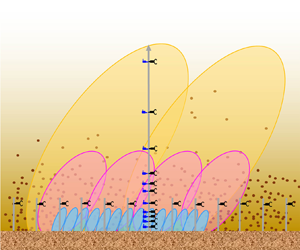Article contents
Scaling law of the second-order structure function over the entire sandstorm process
Published online by Cambridge University Press: 08 January 2024
Abstract

This study reveals the competitive evolutionary process of the main driving factors in the early, middle and late stages of sandstorms, as shear turbulence becomes dominant and is then suppressed by enhanced thermal stability, based on quadrant analysis of the sand-laden turbulent wind field acquired from field observations over the entire sandstorm process. Moreover, the self-organized state of multiscale structures in the energy-containing region of the sand-laden turbulence is found to change significantly as the sandstorm develops. The logarithmic scaling law that governs the cumulative turbulent kinetic energy for the non-stationary flow in the early and late stages of the sandstorm is different from the existing theoretical formula. The corresponding rate of increase in the cumulative kinetic energy with increasing scale is much higher in these stages than in the middle stage of the sandstorm with steady flow. The change in self-organized state of turbulence is responsible for the flow acceleration and the thermal superimposed effect, rather than the addition of sand particles.
Information
- Type
- JFM Papers
- Information
- Copyright
- © The Author(s), 2024. Published by Cambridge University Press
References
- 3
- Cited by


